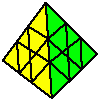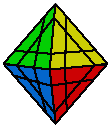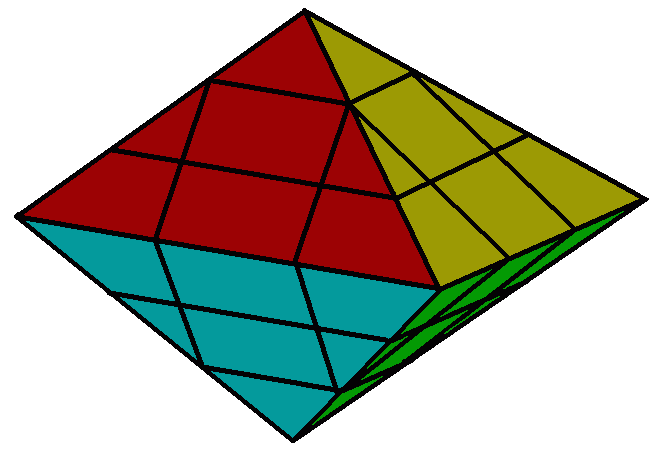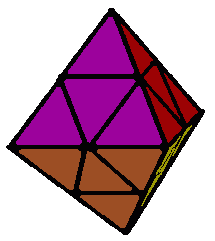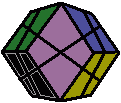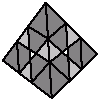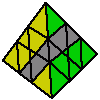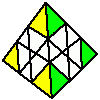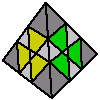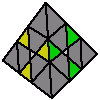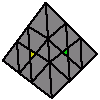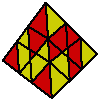| | |
The sequence above for the cycle of three corners is not a real useful turn, except for those cases, which have many edges in place.
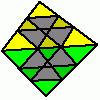  | To bring the corners to their place, you've to watch the edge-centers, because there are no "real" centers. Those build, twisted or not, the platform to bring the first three corners to their place on one level. |
Are they finally there, you don't have to care anymore about their orientation to the edge-centers, they fit automatically to them, as well as the orientation of the fourth corners is already right.
| | | |
Die obige Zugfolge für den Tausch von drei Ecken ist eine Krücke, die man anwenden kann, wenn schon sehr viele Kanten richtig stehen.
  | Um die Ecken an ihren Platz zu bringen, orientiert man sich an den Kanten-Mitten, da es keine "realen" Mitten gibt. Diese bilden, gedreht oder nicht, die Plattform, um die ersten drei Ecken auf eine Ebene zu brintgen. |
Sind sie erst einmal dort angekommen, muß man sich nicht mehr um ihr Verhältnis zu den Kanten-Mitten kümmern, dies stimmt automatisch, wie auch die Orientierung der vierten Ecke dann schon stimmt.
| | |


